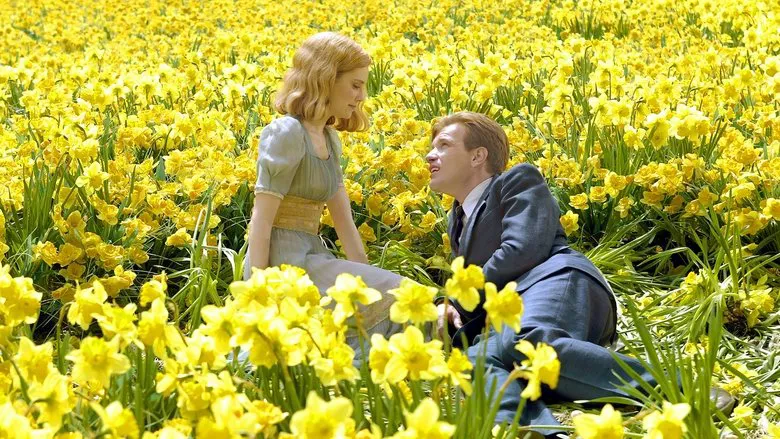Big Fish: A Whimsical Tale of Family Bonds and Fantastical Adventures
Big Fish, a significant entry in Tim Burton’s filmography, masterfully blends the director’s characteristic imaginative style with a touching exploration of familial relationships. This film transcends mere storytelling; it’s an ode to the power of narrative in shaping our perceptions and connections.
The narrative centers around a journalist who embarks on a journey to reconcile with his father, who lies on his deathbed. Haunted by the larger-than-life stories his father has recounted throughout his life, he grapples with the challenge of discerning fact from fiction. This quest for truth becomes a poignant exploration of a son trying to understand the man behind the myth. Is there any basis for believing his father’s incredible life events, or are they merely a product of an overactive imagination?
Burton’s Return to Fantasy: A Visual Feast
Following the less-than-stellar reception of the 2001 remake of “Planet of the Apes,” Tim Burton’s embrace of youthful fantasy in “Big Fish” felt like a welcome return to form. Ewan McGregor shines as the younger version of the father, a charismatic storyteller who leaps through a series of fantastical exploits across an exquisitely constructed and whimsical vision of America. This imagined landscape, which frequently appears throughout Burton’s film making ethos, showcases an incredibly diverse collection of bizarre, yet captivating characters.
Imagine a world where mermaids share the waters with ravenous giants, acrobatic spiders perform alongside miniature circus performers, and one-eyed witches live amongst seemingly unsuspecting ordinary townsfolk. Our protagonist’s journey even leads him to war, yet even this experience is imbued with a dreamlike and bizarre quality. Striking, surreal occurrences are evenly interspersed with the brutal realities of war to create a world of caramel-colored rivers and marshmallow banks. This creative world presented on the screen, while visually impressive, did not appeal to all Burton lovers as compared to his earlier work.
A Shift in Focus: From Gothic Macabre to Family-Friendly Sentiment
Similar to how the son in the film tires of his father’s seemingly unending stream of implausible stories, some viewers felt that Tim Burton, once hailed as a master of macabre gothic fantasys, had become overly sentimental. For these fans, the film’s motifs of daffodil fields, apple pies, and conjoined Siamese twin singers at a county fair was not enough to distract them from longing for the headless horsemen, scissorhands, penguin-men, and Martians that had been previously shown throughout Burton’s earlier works.
However, as a father of two children, Burton was undeniably gravitating toward family-friendly filmography. This conscious act broadened the film’s appeal, bringing light to both childish adults and their children. This shift would leave some fans disappointed, but would open his talent to a wide new range of audiences. The result is a film that may not resonate with everyone, but it’s difficult to deny its earnestness and heartwarming message about the importance of family, legacy, and the power of storytelling, whatever its basis in truth may be.